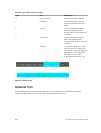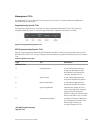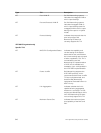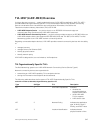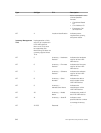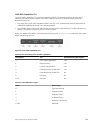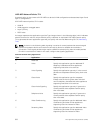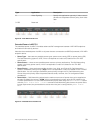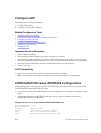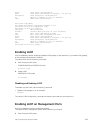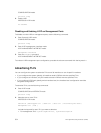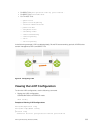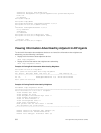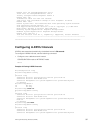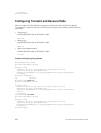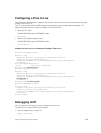
Configure LLDP
Configuring LLDP is a two-step process.
1. Enable LLDP globally.
2. Advertise TLVs out of an interface.
Related Configuration Tasks
• Viewing the LLDP Configuration
• Viewing Information Advertised by Adjacent LLDP Agents
• Configuring LLDPDU Intervals
• Configuring Transmit and Receive Mode
• Configuring a Time to Live
• Debugging LLDP
Important Points to Remember
• LLDP is enabled by default.
• Dell Networking systems support up to eight neighbors per interface.
• Dell Networking systems support a maximum of 8000 total neighbors per system. If the number of
interfaces multiplied by eight exceeds the maximum, the system does not configure more than 8000.
• INTERFACE level configurations override all CONFIGURATION level configurations.
• LLDP is not hitless.
LLDP Compatibility
• Spanning tree and force10 ring protocol “blocked” ports allow LLDPDUs.
• 802.1X controlled ports do not allow LLDPDUs until the connected device is authenticated.
CONFIGURATION versus INTERFACE Configurations
All LLDP configuration commands are available in PROTOCOL LLDP mode, which is a sub-mode of the
CONFIGURATION mode and INTERFACE mode.
• Configurations made at the CONFIGURATION level are global; that is, they affect all interfaces on the
system.
• Configurations made at the INTERFACE level affect only the specific interface; they override
CONFIGURATION level configurations.
Example of the protocol lldp Command (CONFIGURATION Level)
R1(conf)#protocol lldp
R1(conf-lldp)#?
advertise Advertise TLVs
disable Disable LLDP protocol globally
end Exit from configuration mode
exit Exit from LLDP configuration mode
552
Link Layer Discovery Protocol (LLDP)



